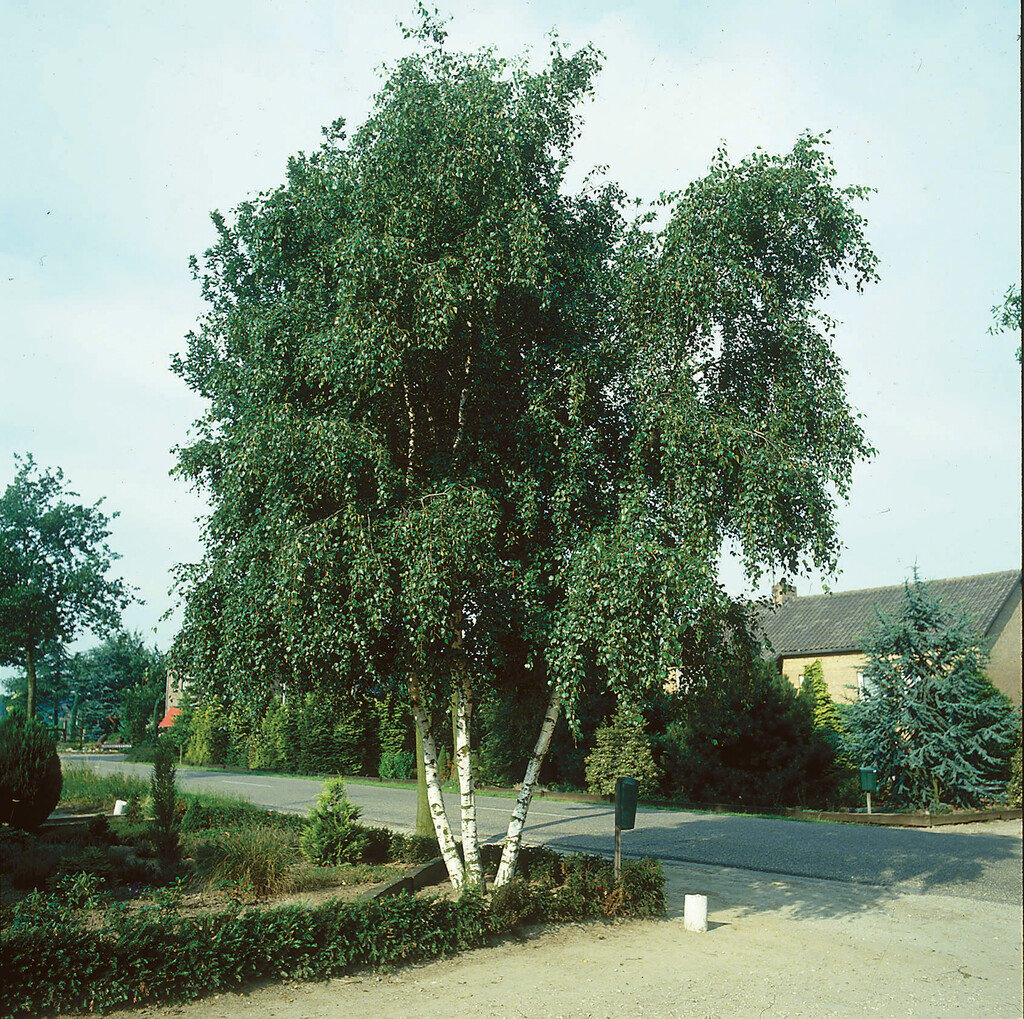Betula pendula
silver birch
Elegant, narrowly conical, deciduous tree up to 25m in height, with slender drooping twigs. Peeling white bark, becomes black and rugged at the base. Diamond-shaped, toothed, mid-green leaves, turn yellow in autumn. Flowers in catkins are yellow-brown and appear in early spring
Other common names
bed wenbirk tree
see morecommon birch
European white birch
lady birch
lady of the woods
warty birch
weeping birch
bedwen arian
Synonyms
Betula albaSize
Ultimate height
Higher than 12 metresTime to ultimate height
20–50 yearsUltimate spread
Wider than 8 metresGrowing conditions
Moisture
Moist but well–drained, Well–drainedpH
Acid, Alkaline, NeutralColour & scent
| Stem | Flower | Foliage | Fruit | |
| Spring | White | Brown | Green | |
|---|---|---|---|---|
| Summer | White | Green | Brown | |
| Autumn | White | Yellow | ||
| Winter | White |
Position
- Full sun
- Partial shade
Aspect
North–facing or South–facing or West–facing or East–facing
Exposure
Exposed or Sheltered Hardiness
H7Botanical details
- Family
- Betulaceae
- Native to GB / Ireland
- Yes
- Foliage
- Deciduous
- Habit
- Pendulous weeping
- Genus
Betula can be deciduous trees or shrubs, usually colouring well in autumn and often with striking white, pink, or peeling brown bark; separate male and female catkins open before or with the leaves in spring
- Name status
Correct
- Plant range
- W Eurasia
How to grow
Cultivation
Will grow in a wide range of situations. Effective when planted in small groups or as a multi-stemmed specimen
Propagation
Suggested planting locations and garden types
- Architectural
- Cottage and informal garden
- Wildlife gardens
Pruning
Pests
May be susceptible to birch borers, leaf-mining sawflies and aphids
Diseases
May be susceptible to honey fungus, a tree rust and powdery mildews
Get involved
The Royal Horticultural Society is the UK’s leading gardening charity. We aim to enrich everyone’s life through plants, and make the UK a greener and more beautiful place.
